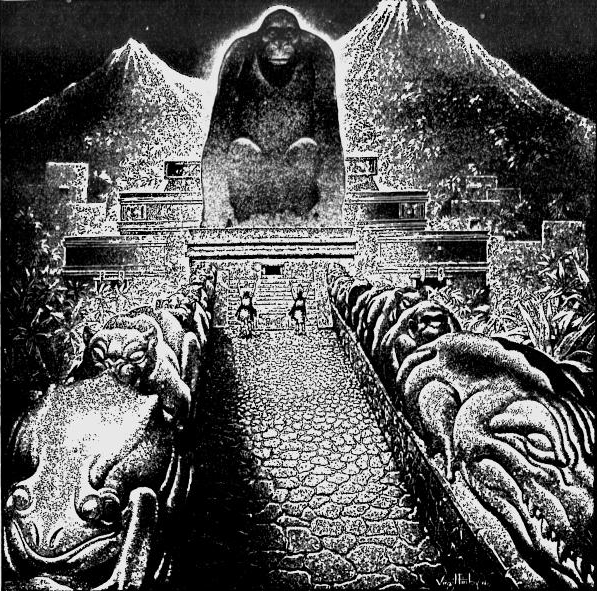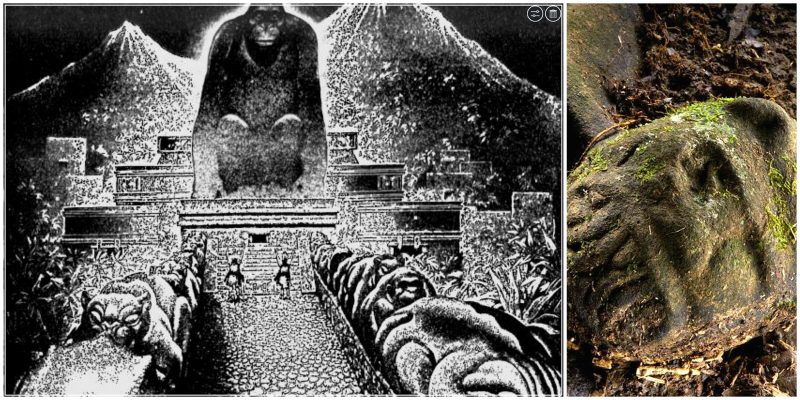Archaeologists have just begun excavations at a site on Honduras’ Caribbean coast. They believe the excavations could lead to the legendary lost city of Ciudad Blanca, otherwise known as the White City.
The excavations began in January and so far the archaeologists have found five dozen stone and ceramic fragments. Other artifacts have been unearthed in the Mosquitia jungle region. Among some of the artifacts found are a vessel with vulture-shaped handles, a tray with a jaguar’s head that is made from clay, and a stone jaguar carved into a throne. Archaeologists believe the pieces could be part of a ceremonial temple. Some of the other pieces appear to represent humans, jaguars, buzzards, lizards, and birds.
The ruins are dated between 1,000 and 1,500 AD. However, the pieces do not appear to be Mayan, as are items that have dominated other sites in the region. One of the archaeologists at the site, Virgilio Paredes, the director of the Honduras’ Institute of Anthropology and Colorado, said that it could be evidence of a completely new culture, different from any previously discovered.
The city’s name is believed to have been derived from the white limestone rock that is found in the area. Ancient texts describe ivory temples filled with treasures.

Another adventurer named Theodore Morde suggested in 1940 that the city was known as the White City of the Monkey God. He saw an ancient civilization worship a giant simian deity symbolized by a statue. Morde wrote about his adventures in two famous magazines and said that the local tribe people had told him of the monkey-worshiping civilization. The monkey supposedly kidnapped a local woman and bred half-human and half-chimp children. The children were then hunted in revenge.
Honduran President Juan Orlando Hernandez visited the excavation site and told local news reporters that he and other people in the area believe that it is a great time to be alive and that it is great to see this excavation process. It is a special time in Honduran history. He added that it is a significant piece for Honduras and the world.
Ramon Espinoza, Honduras’ Minister of Science, said that there will be more research needed to gather data to determine whether or not this site is actually a lost city. Central American history and documentation never mentioned that there was ever a lost civilization.
The area is currently inhabited by the Pech and Payas indigenous groups. Both groups say there was, in fact, a city there long ago. The first written document about it was from 1544 and written by Spanish Bishop Cristobal de Pedraza.

It is rumored that the site had been located and lost between the 1500s and 1800s. In 2012, researchers discovered the existence of an urban centre where the current excavation is taking place.
The site was visited in 2015 by a National Geographic team. They unearthed the mounds of white rubble that was in the shape of a monkey’s skull. After finding that, they estimated the age of the statue to be thousands of years.
One of the National Geographic’s team, Douglas Preston, said that they found the tops of 52 artifacts peeking up from the earth. He also added that there many more that were lying below the ground which could have been burial items. The artifacts included stone ceremonial seats called metates and carved vessels that were decorated with snakes, zoomorphic figures, and vultures.
One of the most significant pieces found emerging from the ground was the head of, possibly, a jaguar, which may have depicted a shaman in a transformed spiritual state. The statue could have also been an artifact that was related to the ritualized ball games that were a feature in pre-Columbian life in Mesoamerica.
The first mention of the city happened to be from Hernando Cortes’ fifth letter to King Charles V of Spain in 1926. Historians gathered from his letters that the city was in the region of Mosquitia, which was, and is still, considered quite dangerous.
